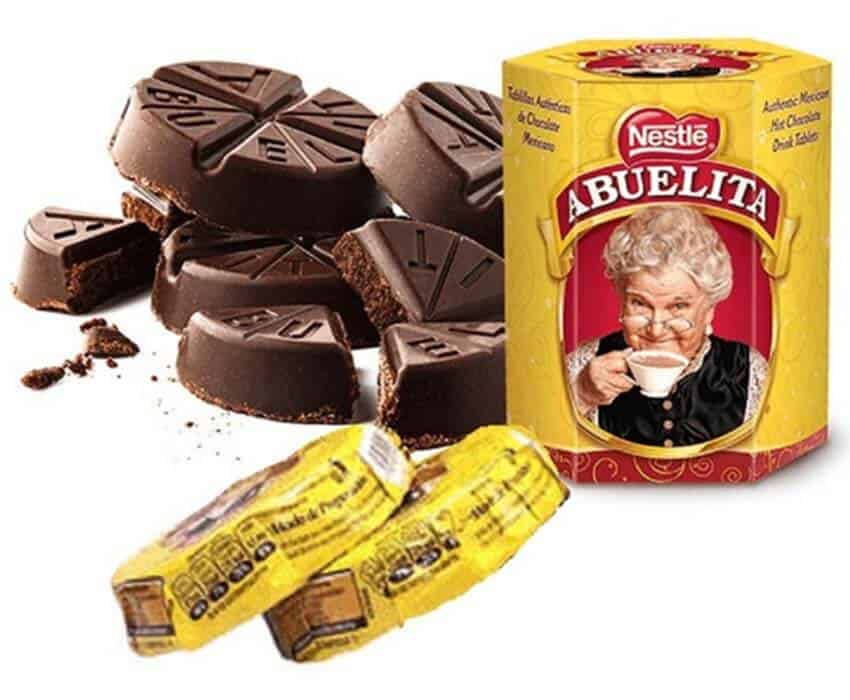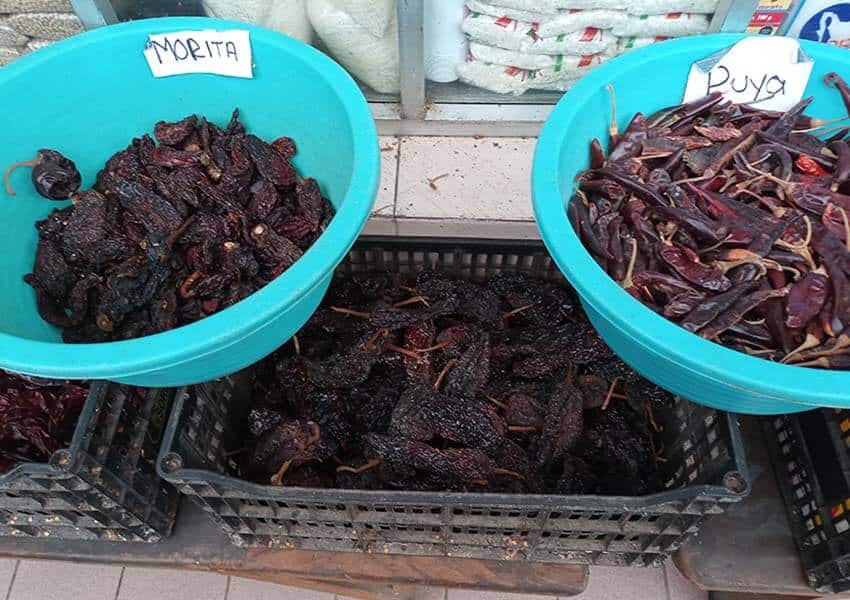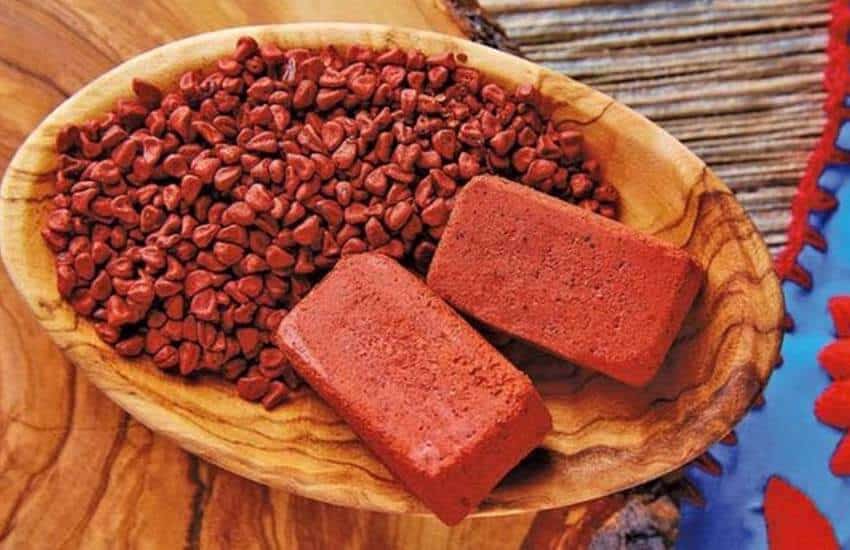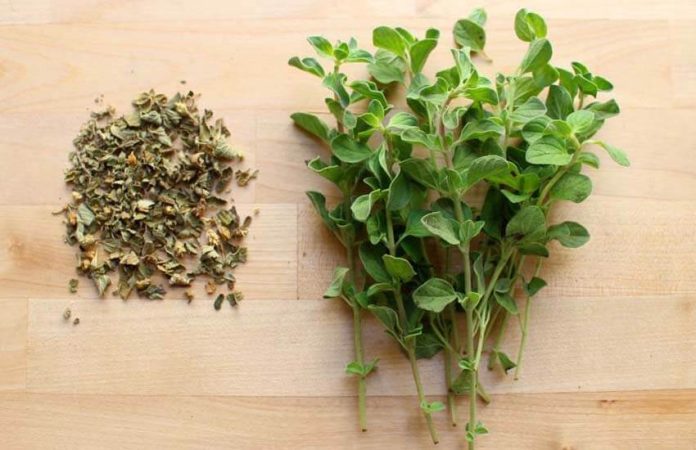Eating in Mexico can be an unexpected adventure; cooking at home, though, is another story. Most of us stick to the familiar, perhaps longing to branch out but unsure exactly how to do it. Having your pantry stocked with some basics of Mexican cooking can help broaden your culinary horizons.
Tortillas go without saying, as do certain cheeses: stringy, melty Oaxaca; rounds of sweet queso fresco; a bit of sharp cotija. I didn’t include fresh ingredients like avocados, mangos, chorizo, etc. That said, certain fresh ingredients are so widely used and their flavors such essential elements to most Mexican dishes that you will find them in this list.
I encourage you to adopt the mindset of a gastronomically adventurous friend, who when asked how she knows what to do with, say, different kinds of chiles, replied without hesitation.
“Who knows what they are?” she said. “When I’m wandering the markets and see things I don’t recognize, I have to have them.”
Mexican cinnamon
![]()
Turns out “Mexican cinnamon” really is a “thing” — it’s actually a different variety than the cassia bark commonly used in the United States. How to tell what you’re buying? The formal name is Ceylon cinnamon (in Mexico, it will be labeled as Mexican cinnamon or simply canela), and it’s grown almost exclusively in Sri Lanka.
The flavor is the real giveaway: it’s warmer and smoother than what you’re used to. The color is a little lighter, and whole rolled sticks of bark are very thin and crumbly.
Find it in bulk at your local mercado (market) or packaged at most Mexican grocery stores. Use in a plethora of sweet (rice pudding, horchata) and savory (moles, tomato sauces) recipes.
Mexican chocolate
Even if it’s just once a year for hot chocolate, or because you like seeing the cute package of the Abuelita brand in your cupboard, you should keep some of these sweet, crumbly cakes of Mexican chocolate on hand.
Flavored with Mexican cinnamon (see above) and sweetened, these are not meant to replace that 72% dark chocolate bar you have stashed. Use in moles, champurrado (a traditional hot corn-based drink) or add to your latte or cappuccino.

Clever bakers will substitute this for plain cocoa in dessert recipes for a more complex and subtle flavor.
Masa harina
This is such an easy, fun ingredient to use, and you’ll be so happy you’ve added it to your cupboard. Soft, flavorful tortillas are just the beginning; there’s a host of other traditional Mexican foods based on corn flour that are easier than you’d think to make at home.
Find bags of masa harina — which is not the same as cornmeal — in any grocery store.
Dried chiles
Another of Mexico’s trio of basic foods that were present long before the Spanish arrived, chiles, in all their forms, deserve a place in your kitchen. Dried guajillo, serrano, poblano, arbol, jalapeño, habanero and other varieties add not just heat but complex flavor, acidity and balance to a million traditional Mexican dishes.

Piloncillo
You’ve seen these little brown cones in mercados and tienditas (small neighborhood stores) everywhere. Piloncillo (pea-loan-SEE-yo) is evaporated sugar cane juice and has an earthier, richer flavor than brown sugar, which is cane sugar with molasses added. And while it can be substituted for brown sugar, it’s a very different sweetener. Buy a few cones and keep them on hand to grate into stews and marinades, fill empanadas or make syrup.
Achiote
This simple seed (annatto in English) is what lends the deep red color and earthy flavor to a host of traditional Mexican dishes, from the Yucatán’s famous cochinita pibil to tacos al pastor. Home cooks can buy achiote in unadulterated paste form or in recados — small, packaged blocks of achiote paste seasoned with vinegar and other spices. Add it to meat marinades (traditional recipes include oregano and Seville orange juice), or use as a rub for meat, poultry, pork and fish.
Limes
I consider these little limes an absolute essential now and feel blessed that here in Mexico they’re so easily and affordably available. Use the fresh juice in every kind of marinade, to make limonada, squeezed over grilled fresh fish, as the base for ceviche and aguachile … the list goes on and on.

Use fresh lime juice instead of vinegar in pasta, potato and green salads, to keep avocados from turning brown and to brighten up beans just before serving.
Cilantro
If you hate cilantro, there’s no use in reading further. But for everyone else: keep a big bunch of fresh cilantro in your fridge at all times, even better if it’s cleaned and disinfected as soon as you get it home so it’s ready at a moment’s notice.
Cilantro’s clean, fresh taste brightens up everything: salads, guacamole, salsas, every kind of taco, most vegetable dishes, chicken, beef, pork or fish, soups and stews. When in doubt, throw some in!
Beans
Whenever I travel in Mexico, I make a point to go to a local mercado and buy some locally grown dried beans. Often, I don’t know or remember what they’re called by the time I get home. Beans are one of Mexico’s three culinary staples, along with corn and chiles. Forget about pintos and black beans; move on to mayacobas, peruana beans and who-knows-what-else that you’ll find in your neck of the woods.

Chipotles in adobo sauce
These are what’s added to turn regular ol’ mayonnaise into an addictive condiment you want to put on everything. But that’s just the tip of the iceberg of ways canned chipotles (dried, smoked jalapeños) transform regular food into something extraordinary. Smoky, spicy, hot but not too hot, they’re an essential ingredient in regional Mexican dishes like chicken tinga and fideo seco. Try them in omelets, quesadillas, potato dishes, marinades, stews and soups.
Mexican oregano
Here’s another ingredient that’s quite different than what we’re used to. Mexican oregano is more fragrant and flavorful and has more essential oils than the Mediterranean variety. Indigenous to Mexico, it’s from the Verbenaceae plant family and has a bit of a citrusy undertone (think lemon verbena). The other oregano is in the mint family.
How to tell the difference? Chances are what you buy here will be Mexican oregano.
Jamaica
Nothing says Mexico like a big, ice-filled glass of bright red agua de jamaica. (hah-MY-ka). The plant is in the hibiscus family (like those big colorful flowers) but a different variety. Rich in Vitamin C, inexpensive and available everywhere, reconstituted dried jamaica flowers can also be used as a vegetarian taco filling.
Find them in bulk at your local mercado or grocery store, boil in water, let sit, strain and add sweetener and lime juice; no need to buy a powdered package with sugar already added.
Janet Blaser is the author of the best-selling book, Why We Left: An Anthology of American Women Expats, featured on CNBC and MarketWatch. She has lived in Mexico since 2006. You can find her on Instagram at @thejanetblaser.
